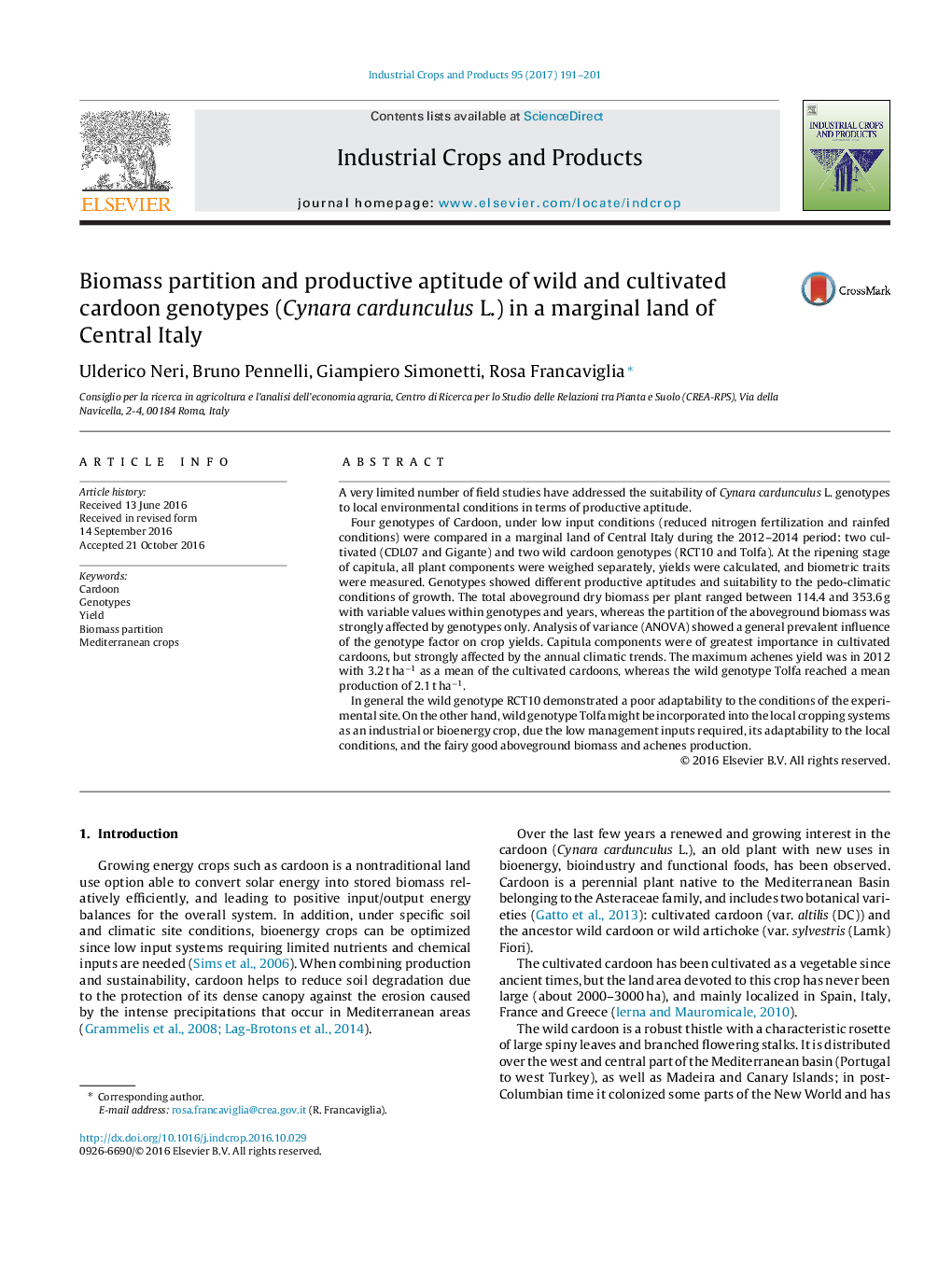| کد مقاله | کد نشریه | سال انتشار | مقاله انگلیسی | نسخه تمام متن |
|---|---|---|---|---|
| 4511948 | 1624815 | 2017 | 11 صفحه PDF | دانلود رایگان |
• Wild genotypes were less productive than cultivated cardoons.
• A prevalent influence of the genotype factor on crop yields was shown.
• Capitula components were of greatest importance in cultivated cardoons.
• The stability in biomass yield and partition was highest in the wild genotype Tolfa.
• Tolfa might be used in local cropping systems for industrial or bioenergy purposes.
A very limited number of field studies have addressed the suitability of Cynara cardunculus L. genotypes to local environmental conditions in terms of productive aptitude.Four genotypes of Cardoon, under low input conditions (reduced nitrogen fertilization and rainfed conditions) were compared in a marginal land of Central Italy during the 2012–2014 period: two cultivated (CDL07 and Gigante) and two wild cardoon genotypes (RCT10 and Tolfa). At the ripening stage of capitula, all plant components were weighed separately, yields were calculated, and biometric traits were measured. Genotypes showed different productive aptitudes and suitability to the pedo-climatic conditions of growth. The total aboveground dry biomass per plant ranged between 114.4 and 353.6 g with variable values within genotypes and years, whereas the partition of the aboveground biomass was strongly affected by genotypes only. Analysis of variance (ANOVA) showed a general prevalent influence of the genotype factor on crop yields. Capitula components were of greatest importance in cultivated cardoons, but strongly affected by the annual climatic trends. The maximum achenes yield was in 2012 with 3.2 t ha−1 as a mean of the cultivated cardoons, whereas the wild genotype Tolfa reached a mean production of 2.1 t ha−1.In general the wild genotype RCT10 demonstrated a poor adaptability to the conditions of the experimental site. On the other hand, wild genotype Tolfa might be incorporated into the local cropping systems as an industrial or bioenergy crop, due the low management inputs required, its adaptability to the local conditions, and the fairy good aboveground biomass and achenes production.
Figure optionsDownload as PowerPoint slide
Journal: Industrial Crops and Products - Volume 95, January 2017, Pages 191–201
